#Amazon river
Explore tagged Tumblr posts
Text
hey uh so I haven't seen anyone talking about this here yet, but
the amazon river, like the biggest river in the fucking world, in the middle of the amazon fucking rainforest, is currently going through its worst drought since the records began 121 years ago
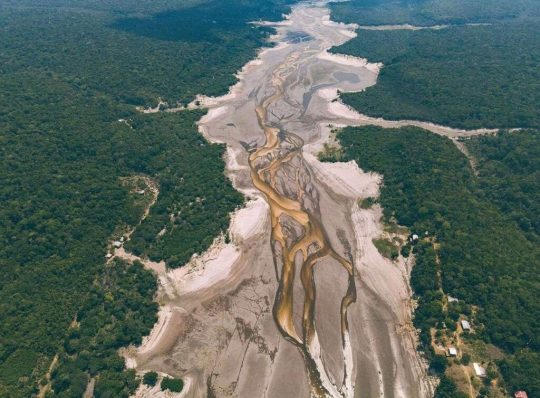
picture from Folha PE
there's a lot going on but I haven't seen much international buzz around this like there was when the forest was on fire (maybe because it's harder to shift the narrative to blame brazil exclusively as if the rest of the world didn't have fault in this) so I wanted to bring this to tumblr's attention
I don't know too many details as I live in the other side of the country and we are suffering from the exact opposite (at least three cyclones this year, honestly have stopped counting - it's unusual for us to get hit by even one - floods, landslides, we have a death toll, people are losing everything to the water), but like, I as a brazilian have literally never seen pictures of the river like this before. every single city in the amazonas state is in a state of emergency as of november 1st.
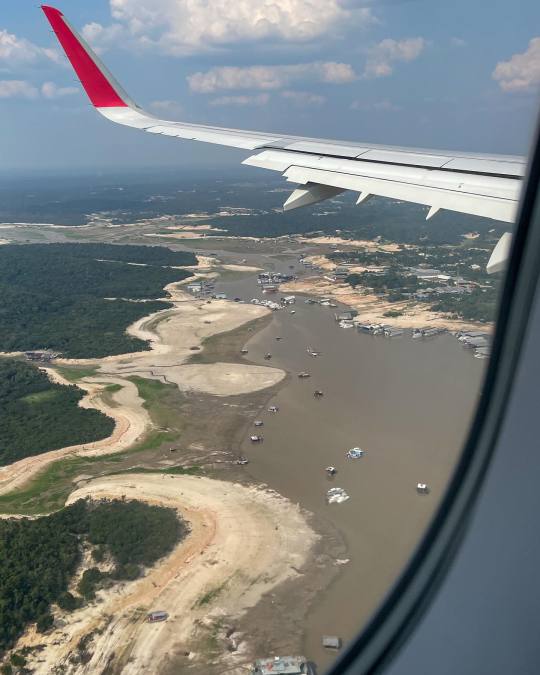
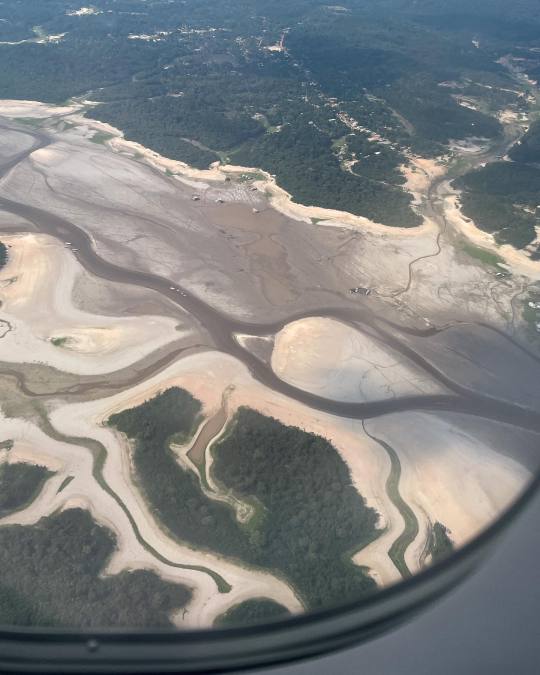
pictures by Adriano Liziero (ig: geopanoramas)
we are used to seeing images of rio negro and solimões, the two main amazon river affluents, in all their grandiose and beauty and seeing these pictures is really fucking chilling. some of our news outlets are saying the solimões has turned to a sand desert... can you imagine this watery sight turning into a desert in the span of a year?
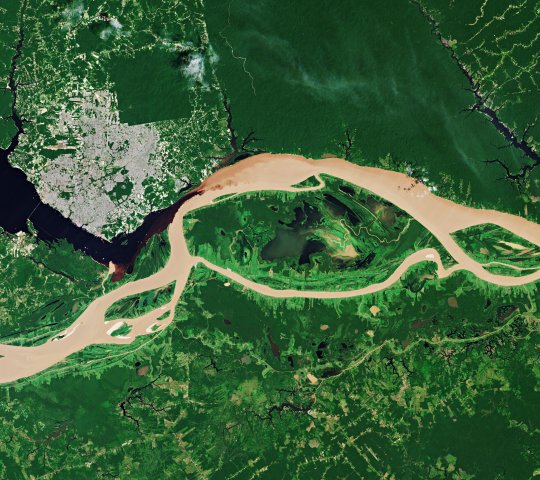
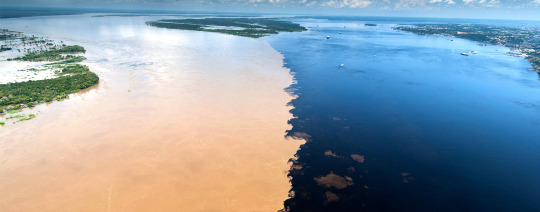
while down south we are seeing amounts of rain and hailstorms the likes of which our infrastructure is simply not built to deal with, up north people who have built everything around the river are at a loss of what to do.
the houses there that are built to float are just on the ground, people who depend on fishing for a living have to walk kilometers to find any fish that are still alive at all, the biodiversity there is at risk, and on an economic level it's hard to grasp how people from the northern states are getting by at all - the main means of transport for ANYTHING in that region is via the river water. this will impact the region for months to come. it doesnt make a lot of sense to build a lot of roads bc it's just better to use the waterway system, everything is built around or floats on the river after all. and like, the water level is so incomprehensibly low the boats are just STUCK. people are having a hard time getting from one place to another - keep in mind the widest parts of the river are over 10 km apart!!
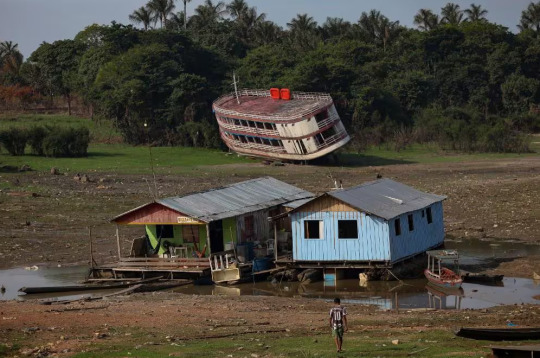
this shit is really serious and i am trying not to think about it because we have a different kind of problem to worry about down south but it's really terrifying when I stop to think about it. you already know the climate crisis is real and the effects are beyond preventable now (we're past global warming, get used to calling it "global boiling"). we'll be switching strategies to damage control from now on and like, this is what it's come to.
I don't like to be alarmist but it's hard not to be alarmed. I'm sorry that I can't end this post with very clear intructions on how people overseas can help, there really isn't much to do except hope the water level rises soon, maybe pray if you believe in something. in that regard we just have to keep pressing for change at a global level; local conditions only would not, COULD NOT be causing this - the amazon river is a CONTINENTAL body of water, it spans across multiple countries. so my advice is spread the word, let your representatives know that you're worried and you want change towards sustainability, degrowth and reduced carbon emissions, support your local NGOs, maybe join a cause, I don't know? I recommend reading on ecological and feminist economics though
however, I know you can help the affected riverine families by donating to organizations dedicated to helping the region. keep in mind a single US dollar, pound or euro is worth over 5x more in our currency so anything you donate at all will certainly help those affected.
FAS - Sustainable Amazon Fundation
Idesam - Sustainable Developent and Preservation Institute of Amazonas
Greenpeace Brasil - I know Greenpeace isn't the best but they're one of the few options I can think of that have a bridge to the international world and they are helping directly
There are a lot of other smaller/local NGOs but I'm not sure how you could donate to them from overseas, I'll leave some of them here anyway:
Projeto Gari
Caritás Brasileira
If you know any other organizations please link them, I'll be sure to reblog though my reach isn't a lot
thank you so much for reading this to the end, don't feel obligated to share but please do if you can! even if you just read up to here it means a lot to me that someone out there knows
also as an afterthought, I wanted to expand on why I think this hasn't made big news yet: because unlike the case of the 2020 forest fires, other countries have to hold themselves accountable when looking at this situation. while in 2020 it was easier to pretend the fires were all our fault and people were talking about taking the amazon away from us like they wouldn't do much worse. global superpowers have no more forests to speak of so I guess they've been eyeing what latin america still has. so like this bit of the post is just to say if you're thinking of saying anything of the sort, maybe think of what your own country has done to contribute to this instead of blaming brazil exclusively and saying the amazon should be protected by force or whatever
#solarpunk#sustainability#environmentalism#climate change#climate crisis#global warming#amazon rainforest#amazon river#geography#brazil#degrowth#punk#global boiling#ecopunk#anti capitalism#climate action#climate activism#the world does not die on my watch#i saw someone use that tag and uh i like it we should make it a thing#long post#:/ sorry i know no one likes lengthy bad news posts on their dashes but i've been thinking about this quite a bit#and i don't really know what to do to help bc i don't have money to donate and i am 10 thousand km away#i think i could be doing more to help but i am already trying my best#again dont feel obligated to share or read this but it would be nice and i would love you forever#have removed lbv from the post
7K notes
·
View notes
Text


#good news#arapaima#fish#endangered species#environmentalism#science#nature#animals#conservation#amazon rainforest#amazon river#environment#community organizing#community conservation
1K notes
·
View notes
Text
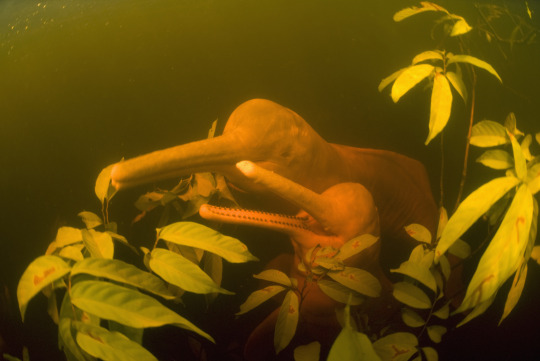
Did you know there are pink dolphins? Meet the Amazon river dolphin (Inia geoffrensis). Found in the Amazon and Orinoco rivers, this species is known for its rosy complexion. How pink it is depends on the water it lives in: the Sun can have a fading effect on its signature color, so living in murkier water can help it retain its pink hue. To track down prey, including piranhas and cichlids, it uses echolocation and the hairs on its snout.
Photo: Ana Claudia Jatahy - MTUR, Public Domain, Wikimedia Commons
577 notes
·
View notes
Text
A Changing Climate Is Scorching the World’s Biggest River. (New York Times)

Excerpt from this New York Times story:
The world’s largest river is parched.
The Amazon River, battered by back-to-back droughts fueled by climate change, is drying up, with some stretches of the mighty waterway dwindling to shallow pools only a few feet deep.
Water levels along several sections of the Amazon River, which winds nearly 4,000 miles across South America, fell last month to their lowest level on record, according to figures from the Brazilian Geological Service.
In one stretch in the Brazilian state of Amazonas, the river was 25 feet below the average for this time of year, according to the agency, which began collecting data in 1967.
Parts of three of the Amazon River’s most important tributaries — major rivers in their own right, each spanning over 1,000 miles — have also fallen to historical lows.
The crisis has gridlocked the Amazon, a vital watery superhighway that serves as practically the only way to connect forest communities and move commerce around some of the most remote stretches on the planet.
Faced with a situation that shows no sign of abating, Brazil has resorted to an extraordinary measure that might have been unthinkable not too long ago: making the world’s largest river deeper.
Starting this month, the country plans to begin dredging sections of the river with the aim of ensuring that, even in times of drought, people and goods can keep moving through the rainforest.
“In some places, we can practically see the vegetation on the surface of the river,” the water so low that plants on the riverbed are exposed, said Fabricio de Oliveira Galvão, the director of the National Department of Transport Infrastructure, a federal agency. “So, this limits navigation. People aren’t able to travel like this.”
The remarkable drop in water levels has left boats struggling to shuttle children to school, rush the sick to hospitals or deliver medicine and drinking water to distant villages.
72 notes
·
View notes
Text


Animal of the day: Emerald tree boa! (Corallus caninus) The emerald tree boa is native to the jungles of South America! Its striking green coloration helps it to camouflage amongst the leaves, protecting it from predators and keeping it hidden from prey! However, when they are young, these snakes are actually a reddish-orange color with a bright yellow underbelly, as seen in the individual on the right! These fascinating reptiles are not venomous, quite common and frequently kept in zoos the world over! Interestingly, members of this species that are born in or near the Amazon River Basin are more docile and grow quite large! Image sources: https://en.wikipedia.org/wiki/Emerald_tree_boa https://www.reptilesncritters.com/emerald-tree-amazon-basin.php
#snake#boa#emerald tree boa#reptiles#herpetology#snakeblr#animals#animal of the day#aotd#green#amazon river#jungle#south america#colombia#brazil#peru
33 notes
·
View notes
Text
Wet Beast Wednesday: Amazonian river dolphin
It's the last Wet Beast Wednesday of the year. I started doing this little project to help myself get used to Tumblr and encourage myself to use it more often. That absolutely worked and I'm going to keep going. For my first ever WBW post, I discussed an adorable cetacean, so I'm going to call back to that by discussing a less adorable cetacean. Meet the Amazonian river dolphin, also known as the boto, bufeo, and pink dolphin because, well look at it.

(image id: an Amazonian river dolphin peeking out of the water. It is a large dolphin with a long, thin snout, bulbous head, and small dorsal fin. Its entire body is bright pink. end id)
River dolphins are dolphins the exclusively inhabit freshwater. There are several species (from four to six depending on your source) that are not all closely related. Probably the most famous of these is the Amazonian river dolphin Inia geoffrensis. They live in the Amazon, Orinoco, and upper Maderia rivers of South America. There are three subspecies: I. g. geoffrensis (the Amazon river dolphin), I. g. humboldtiana (the Orinoco river dolphin), and I. g. boliviensis (the Bolivian river dolphin, previously considered a separate species). There is also debate on whether the Araguaian river dolphin should be considered a subspecies of Amazonian river dolphin or a separate species. A common name for the dolphins found throughout Brazil is boto, though this is also used to refer to another river dolphin species, the tucuxi, as well as marine dolphins that occasionally enter fresh or brackish water. The amazonian river dolphins is the largest river dolphin, with males reaching 2.5 meters (8.2 ft) and 185 kg (408 lbs). Males are larger than females, averaging 16% longer and 55% heavier. The most famous feature of these dolphins are their color. while they are born grey, they lighten up as they age, eventually becoming pink. The amount of pink varies between individuals, with some being grey with pick spots and others going full Barbie mode. It's not clear why they turn pink and why some are pinker than others. Possible explanations include the distribution of capillaries under the skin, consuming large amounts of pink pigment through their diet (the same thing that happens with flamingos), and exposure to sunlight. Males are generally pinker than females, which may be due to them accumulating larger amounts of pink scar tissue while fighting over females. The dolphins get noticeably pinker when they are excited, which may be similar to a human blushing.

(Image id: a dolphin holding its head out of the water, seen from the front. Its mouth is partly open, showing a single row of teeth within. It is pink. end id)
Amazonian river dolphins are not known for being the prettiest cetaceans. With long, skinny shouts, lumpy bodies, non-distinct dorsal fins, and scarred, rough skin, they won' be winning many beauty contests. Maybe its for the best that they don't have very good eyesight. When living in a place as murky as a major river, eyes often aren't that useful. They instead navigate almost exclusively through echolocation. While not as powerful as they eyes of oceanic dolphins, river dolphin eyes are adapted to take in any available light, letting them see better in low-light environments such as a murky river under a canopy of leaves. The bulbous head contains the melon, an organ found in cetaceans used for echolocation. The melon can change shape, which may help focus the echolocation for different purposes. Part of the lumpy profile of the boto likely comes from their lack of blubber. Living in a tropical river means that river dolphins don't lose nearly as much body heat and therefore don't need the thick layer of blubber that helps streamline oceanic dolphins. They also don't need to be as hydrodynamic as they are a lot slower than oceanic dolphins. While slow, river dolphins are maneuverable and can rotate their flippers to turn themselves around without having to swim in a circle. In addition, unlike oceanic dolphins, the boto's neck vertebrate are unfused, allowing them to turn their head side to side. All of this helps the dolphins navigate and search for food in crowded rivers and flooded sections of forest. Another unique feature is the presence of whiskers on their snouts and cheeks, which are believed to help find food when poking around in the mud and aquatic plants. Yet another unique feature is the fact that they are heterodonts. This means they have different types of teeth. In the front of the snouts are the sharp, conical teeth found in other dolphins, but the uniquely have molar-like teeth in the back. These are used to crush hard prey, such as shellfish and turtles.

(image: a dolphin partially breaching out of the water while upside-down. Its large fins are in the air and its head is turned soits chin is facing the camera. end id)
The diet of the Amazonian river dolphin is the most varied of any toothed cetacean. At least 53 species of fish are part of its diet, though it prefers croakers, chiclids, tetras, and piranhas. As mentioned above, its molar-like teeth also allow it to crush through hard-shelled animals including bivalves, crabs, and turtles. They have been known to cooperate with tucuxi dolphins and otters to hunt, with the different animal working together to drive fish out of hiding places. The dolphins practice seasonal migration to follow their prey. During the wet season, they travel into floodplains, lakes, flooded parts of forests, swamps, and other places that are inaccessible during the dry season. During the dry season, they travel back into the main river. Males return to the river sooner that females and calves. The dolphins are less social than other dolphins, usually traveling alone or in groups of 2-4 members, though larger groups do happen. They do communicate with each other using whistles. During mating season, which usually happens in late June or August, they will congregate in large numbers. Males attempt to court females by carrying objects in their mouths such as branches and leaves and by nipping at the female's fins. Males also become aggressive and will fight with other females and with females that refuse their advances. These fight often leave the males covered in scars and nicks that can be used by scientists to identify them. Males will attempt to mate with as many females as possible. Gestation takes just under a year and calves are born in May and June as the wet season is beginning. The calves will nurse for a year and stay with their mother for two to three years. Females will not mate until their current calf has left, giving a mating frequency for females of between 2 and 3 years. Males may attack calves to force the mother to mate again. The life expectancy of wild dolphins is unknown.

(image id: a dolphin holding a leaf in its mouth. This may be part of a courtship display or play behavior. end id)
Amazonian river dolphins are known to be curious, playful, and not fearful of unfamiliar objects. This may because adults have almost no natural predators. Jaguars, caimans, and anacondas will attack them, but prefer targeting calves over adults. They are known to play with sticks, plants, small animals, and other submerged objects. They are also reported to follow boats and rub up against them and grab oars with their mouths. This may be a combination of play behavior and following boats to catch fish they scare. River dolphins have also been reported to approach humans, usually children, and examine or play with them. Botos feature quite a bit in the mythology and folklore of the peoples of South America. A common myth states that the boto can come on shore at night and take the form of a human, a boto encatado. While appearing as beautiful people, they need to wear hats as their blowholes stay on their heads. Male encantados come to shore to party and seduce women, but must return to the river before the transformation wears off. Many illegitimate children are fathered when an encantado comes to town. Female encantados seduce and bewitch married men. She will visit him on the anniversary of their meeting for seven years. On the seventh year, she turns him into a baby and places him in his wife's womb. Some stories say that they come from an underwater paradise called Encante and visit humans to experience hardships and parties. It is said that people who travel the river at night, especially women and children, may be kidnapped by the dolphins and taken to Encante, from which they will never return. Other stories say that the dolphins can make beautiful music and control storms. Killing one brings bad luck, and eating one brings worse luck, while making eye contact curses you with nightmares. Their body parts had magic powers and were sometimes used as fetishes (not that kind) by shamans.
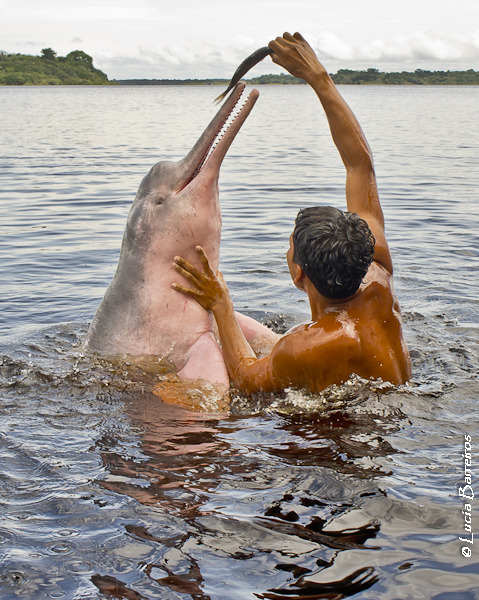
(image: a man with back to the camera hand-feeding a fish to a dolphin. end id)
Amazonian river dolphins are classified as endangered by the IUCN. Their largest threats come from humans. Overfishing leads to food loss and can lead to the dolphins becoming entangled in nets and drowning. Damming reduced their habitat and excess gold mining releases poisonous mercury into the water. Some are also killed to be used as bait. Fishermen have been known to kill dolphins who damage their equipment. Deforestation is also decreasing usable habitat. Amazonian river dolphins fare poorly in captivity and captive breeding is not considered a viable conservation method.

(image id: a dolphin calf being rescued by a conservationist. the person is holding it out of the water. The dolphin has the same body shape as an adult, but is grey instead of pink).
#wet beast wednesday#amazonian river dolphin#amazon river dolphin#river dolphin#pink dolphin#boto#dolphin#cetacean#freshwater biology#freshwater ecology#amazon river#biology#zoology#ecology#animal facts#cetaceans#boto encantado#encantado#image described#long post
89 notes
·
View notes
Text
One of the Amazon River's main tributaries has dropped to its lowest level ever recorded, Brazil's geological service said Friday, reflecting a severe drought that has devastated the Amazon rainforest and other parts of the country. The level of the Negro River at the port of Manaus was at 12.66 metres on Friday, compared to a normal level of about 21 metres. The previous record low level was recorded last year, but toward the end of October.
Continue Reading
36 notes
·
View notes
Text
🐬 Daily Cetacean Fact: 🐬
Amazon River Dolphin: also known as the boto or pink river dolphin, it is a species that is endemic to South America. The Amazon river dolphin is the largest species of river dolphin, with adult males reaching 408lbs in weight, and 8.2ft in length. Adults acquire a pink color, more prominent in males. They have one of the widest ranging diets, feeding on up to 53 different species of fish, such as croakers, catfish, tetras and piranhas. They also consume other animals such as river turtles, aquatic frogs, and freshwater crabs.

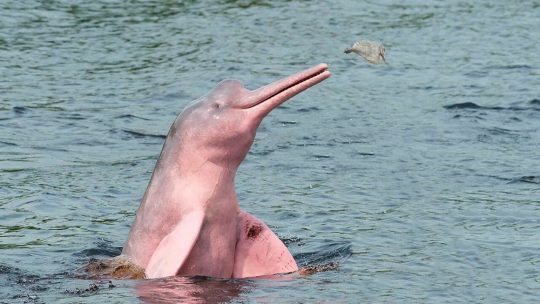
#amazon river dolphin#river dolphin#pink river dolphin#pink dolphin#amazon river#cetacean#river cetacean#respect the locals#marine animals#marine biology#marine life#marine#marine mammal#dolphin#dolphin post#cetacean post#daily cetacean#daily cetacean fact#cetacean fact#facts about cetaceans
43 notes
·
View notes
Text


Amazon Drought Exposes Ancient Rock Carvings
Human faces sculpted into stone up to 2,000 years ago have appeared on a rocky outcropping along the Amazon River since water levels dropped to record lows in the region’s worst drought in more than a century.
Some rock carvings had been sighted before but now there is a greater variety that will help researchers establish their origins, archaeologist Jaime de Santana Oliveira said on Monday.

One area shows smooth grooves in the rock thought to be where Indigenous inhabitants once sharpened their arrows and spears long before Europeans arrived.
“The engravings are prehistoric, or precolonial. We cannot date them exactly, but based on evidence of human occupation of the area, we believe they are about 1,000 to 2,000 years old,” Oliveira said in an interview.

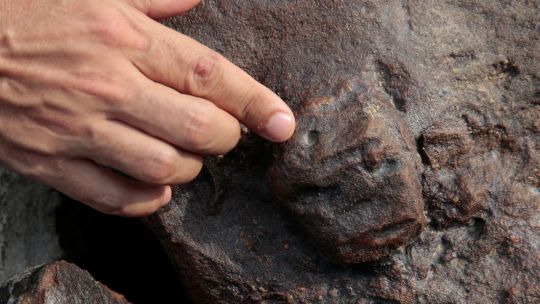
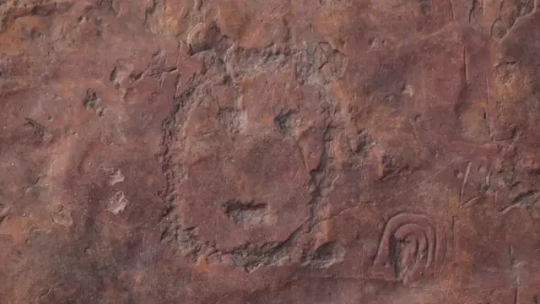
The rocky point is called Ponto das Lajes on the north shore of the Amazon near where the Rio Negro and Solimões rivers join.
Oliveira said the carvings were first seen there in 2010, but this year’s drought has been more severe, with the Rio Negro dropping 15 meters (49.2 feet) since July, exposing vast expanses of rocks and sand where there had been no beaches.
“This time we found not just more carvings but the sculpture of a human face cut into the rock,” said Oliveira, who works for the National Historic and Artistic Heritage Institute (IPHAN) that oversees the preservation of historic sites.
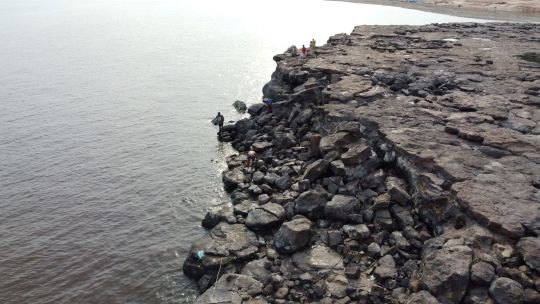
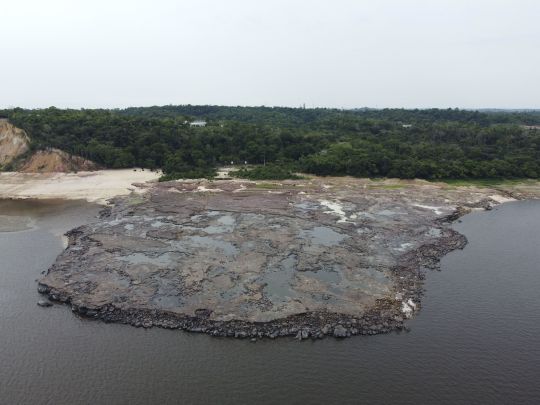
#Amazon Drought Exposes Ancient Rock Carvings#amazon river#Ponto das Lajes#rock carvings#ancient carviings#ancient artifacts#archeology#archeolgst#history#history news#ancient history#ancient culture#ancient civilizations
102 notes
·
View notes
Text

Amazonas -2023-
#tobias bruns#photographers on tumblr#black and white photography#original photographers#b/w photography#amazonas#brazil#amazon river#nature photography#nature#landscape#landscape photography
25 notes
·
View notes
Text
Fish of the Day
Today's fish of the day is the pirarucu!

The pirarucu, scientific name Arapaima gigas, is known for its impressive size. Getting as large as 3 meters, and about 10ft in length, the pirarucu is one of the largest freshwater fish in the world! Living in the Amazon river basin, this fish can be found in Peru, Brazil, and Guyana, with an invasive population within Bolivia, and some Eastern Asian countries. It is thought that this fish washed into Bolivia in the mid 1970's when a nearby Peruvian fish farm was flooded, and since then the pirarucu has wreaked havoc among the local fish populations, although the populations introduced into Asia have far less issues. Within their range, these fish prefer to live in slower moving waters or stagnant areas of lakes, and have a breeding season tied to the water amount in local waterways.
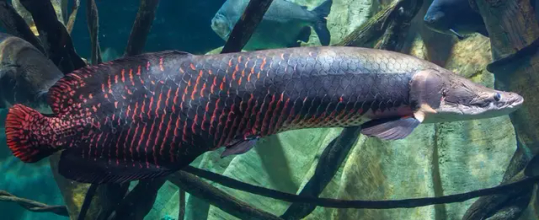
The diet of the pirarucu is made up primarily of fish along the basin bed, but a secondary large section of their diet is made up of small insects and other invertebrates at the surface of the water, along with crustaceans and water birds. These fish are air breathers, and must travel to the surface every 10-20 minutes to swallow in a mouthful of air, in a loud gasp, during which time they also hunt for prey. These fish are predated on in their natural habitat by crocodiles, boto, and humans, and they have adapted defenses, the pirarucu has large bony armor spanning the length of the body, similar to that of plecostomus fish.The lung structure that allows them to breath air is made out of a modified swim bladder that has adapted for easier gas exchange.

During the drought months of February-April, the pirarucu will begin spawning, laying its eggs. Then after this during the flooding months, these eggs will hatch. For the first 8 days of their lives these fish survive off of a gill structure, before going through a morphology change as the gills adapt to ion absorption rather than water intake. These babies are then protected by the male and female pirarucu within a built nest for up to three months, during which time they can get as large as a 1ft. By it's first year of life, these fish can get as large as 3ft, and reach sexual maturity by their fifth year. Then, they can live as long as 10-20 years. Although we don't know exactly when these fish would have started existing within their family, within Columbia, a 13 million year old fossil of pirarucu, or an ancestor of was found.

That's the pirarucu, everybody. Have a wonderful day!
#fish#fish of the day#fishblr#fishposting#aquatic biology#marine biology#freshwater#freshwater fish#animal facts#animal#animals#fishes#informative#education#aquatic#aquatic life#nature#river#ocean#pirarucu#Arapaima gigas#fish time#amazon river#amazon
21 notes
·
View notes
Text

Christian Cravo.
28 notes
·
View notes
Text

I don't recommend going barefoot in the river. Hehe.
Xingu River Ray (Potamotrygon leopoldi)
Xingu River, tributary of the Amazon, Brazil
Status: Vulnerable
14 notes
·
View notes
Text
How the Amazon River got its name
Homer’s epic tales speak of a fierce tribe of large, powerful female warriors who dwelled near the Caucasus Mountains in the days before the Trojan War. They were said to have stood against the invading Greeks until their queen, Penthesilea was killed by Achilles. They were called Ἀμαζόνες - Amazons, derived from the Greek words ἀμαζός - breastless, from the belief each warrior had her right breats removed tp facilitate shooting of bow and arrow. There are, however, other theories as to the origin of the word, for the Amazons were often depicted with both breasts, which again calls this myth into question, but that is another topic.
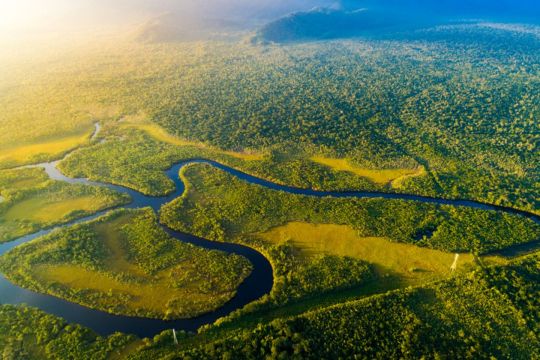
The Amazon River (x)
Fast forward to 1541 when the Spanish seafarer Orellana, while exploring a large river in South America, was attacked by a groupe of natives whose women fought as fiercely as the men.Thinking of the powerful women of antiquity, he named them Amazons, and because they lived by this river, he named the river Amazon.
165 notes
·
View notes

